It’s been over a month now since we first wrote about the mobile gaming gold rush that started with the onset of COVID19 and Shelter-in-Place restrictions. Times may be uncertain but one thing is clear: mobile is now the primary driver of growth for digital games consumption. Here’s a recap of the state of mobile gaming in the first half of 2020 and why some deem mobile gaming “recession-proof”.
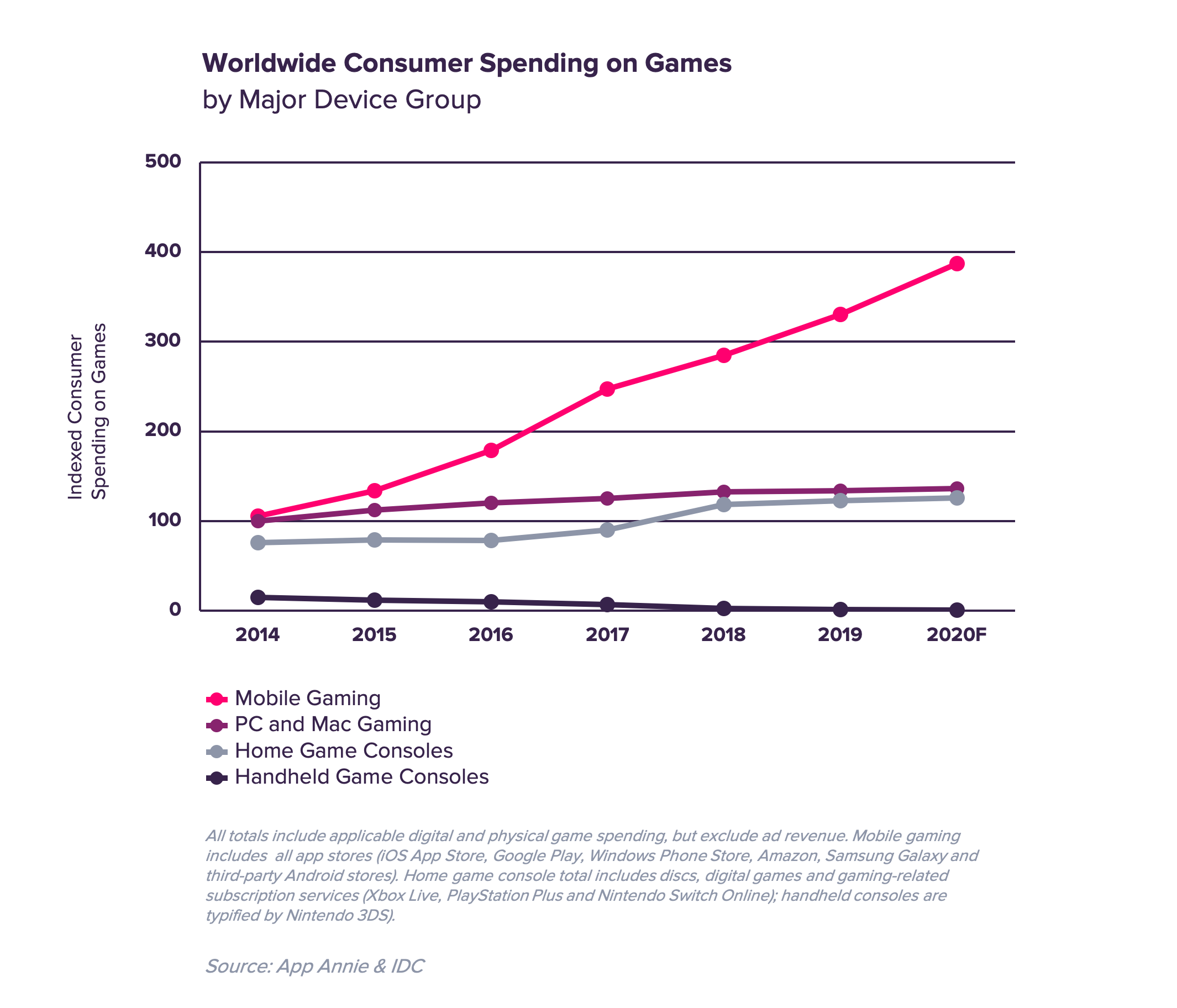
Source: App Annie
Mobile Gaming Downloads in First Half of 2020
In H1 2020, weekly mobile game downloads spiked as high as 1.2 billion, a new world record. Games represented nearly 70% of total worldwide consumer spend for the iOS and Google Play store combined in Q1 2020. Games also accounted for roughly 40% of overall downloads. On average, weekly download levels in Q2 2020 remained at 1 billion throughout the quarter, up 20% year over year.
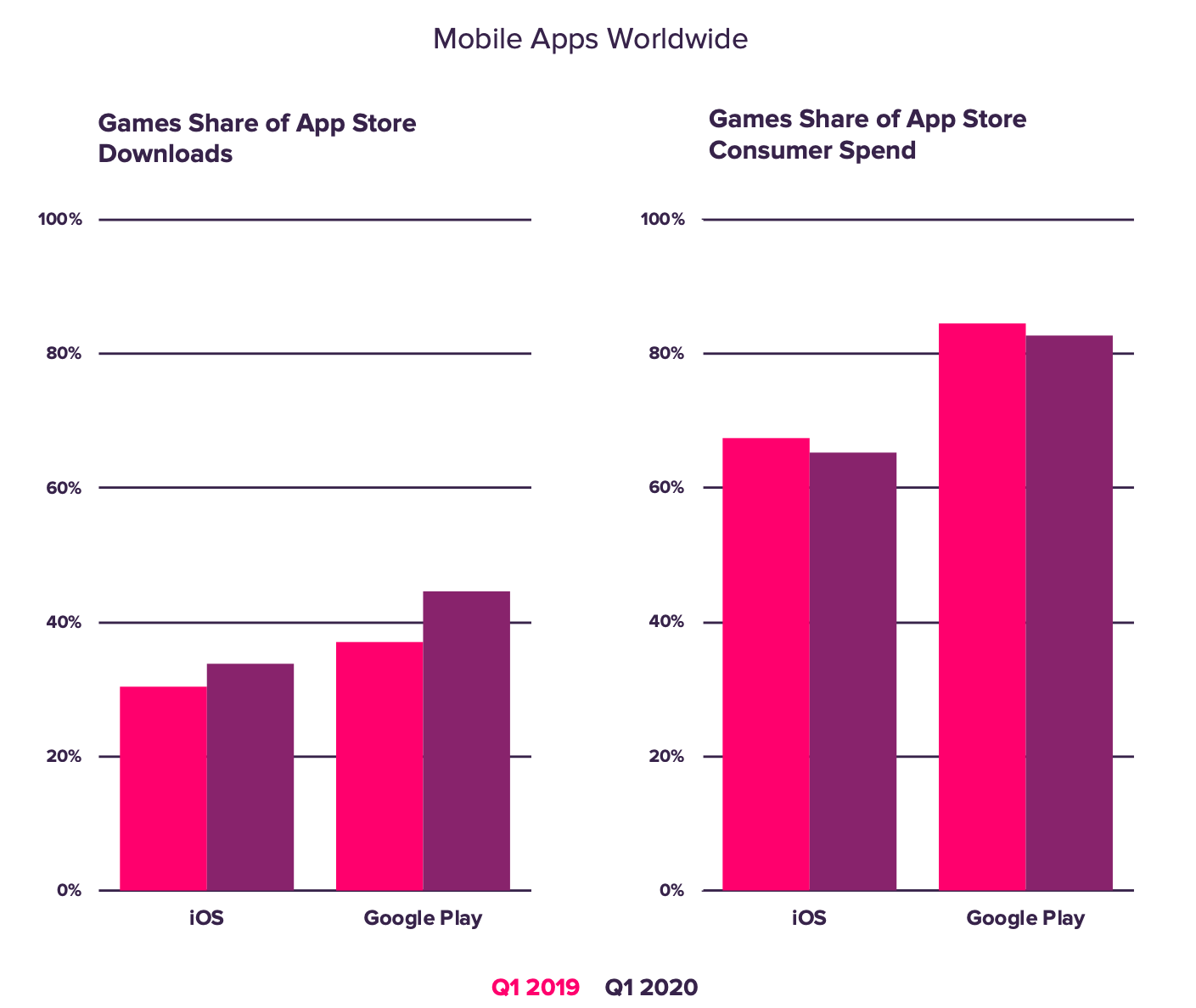
Source: App Annie
Between April 2020 and January 2020, users downloaded 30% more mobile games per week on average. In Q2 2020, consumers downloaded 14 billion games. That included 3 billion games at 20% year over year growth on iOS and 11 billion games at 25% year over year growth on Google Play. Games also accounted for a higher share of overall downloads on Google Play than the App Store at 45% versus 30%, respectively.
Mobile Gaming Revenue in First Half of 2020
During the first half of the year, mobile gaming not only saw record downloads but also record revenue and numbers of new players. Mobile game ad revenues rose 59%. In Q2 2020, mobile gamers set a new quarterly record of $19 billion in consumer spend. Both app stores saw strong revenue growth, with consumers spending 15% more on games between Q1 and Q2.
The Google Play store’s growth far outpaced that of the App Store. Google Play’s revenue grew 25% quarter over quarter, over 2x the growth rate on iOS. Overall, games also accounted for the majority of consumer spend across both stores, but again, more so on Android. Mobile gaming accounted for 85% of spend on Google Play and 65% on iOS.
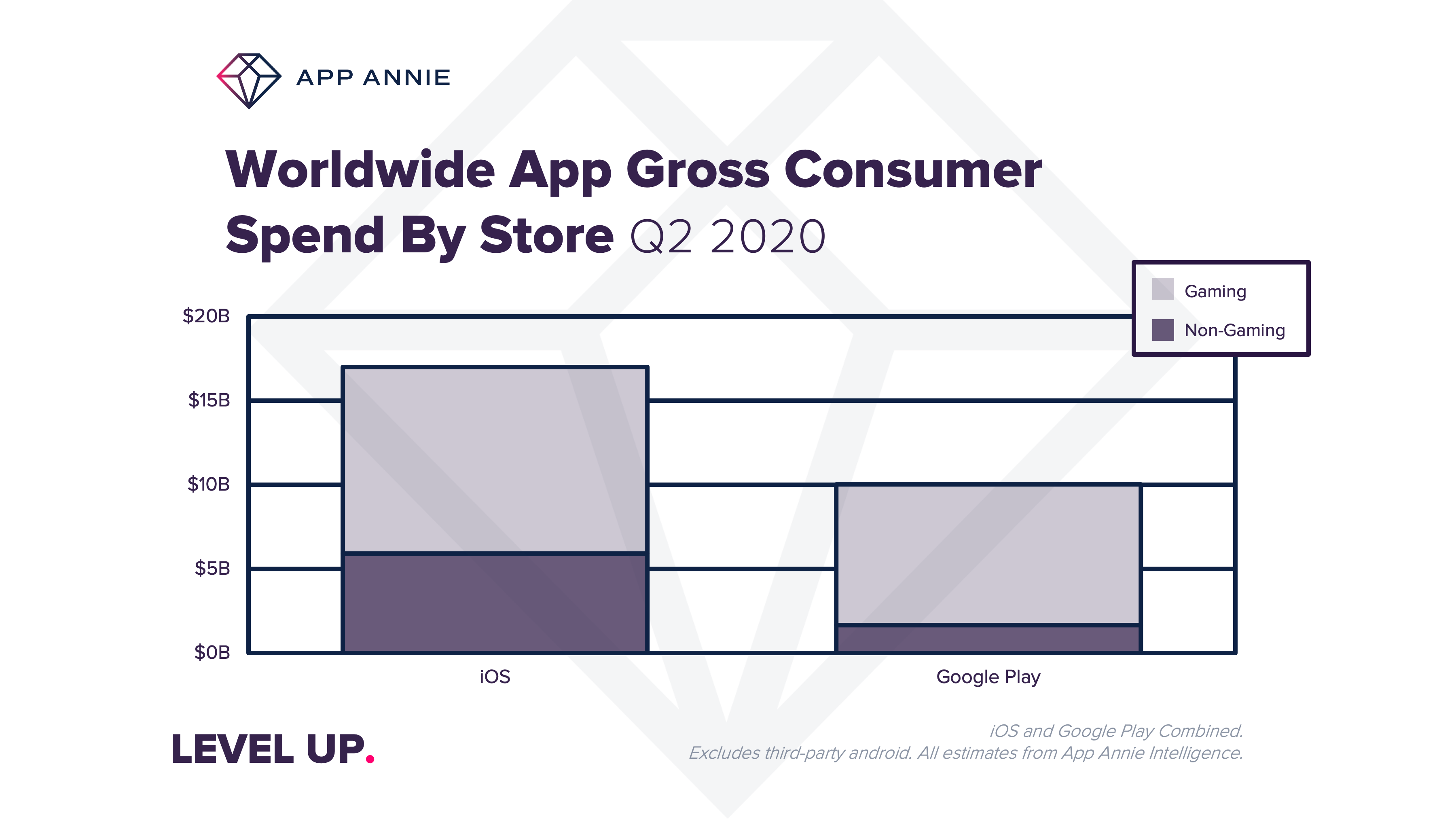
Source: App Annie
“Pandemic players,” or newcomers to the gaming world during lockdown, converted to paying users 24% more than a pre-COVID baseline. Mobile gamers installed 84% more apps than before.
Current projections estimate 2.7 billion users will spend $77.2 billion on mobile games in 2020. Additional estimates predict mobile gaming will generate revenues of $95.4 billion by 2022, accounting for 41% of a total global games market worth $196 billion.
Top Grossing Game Categories
Consumers spent most in portable games with real-time multiplayer and co-op game modes.
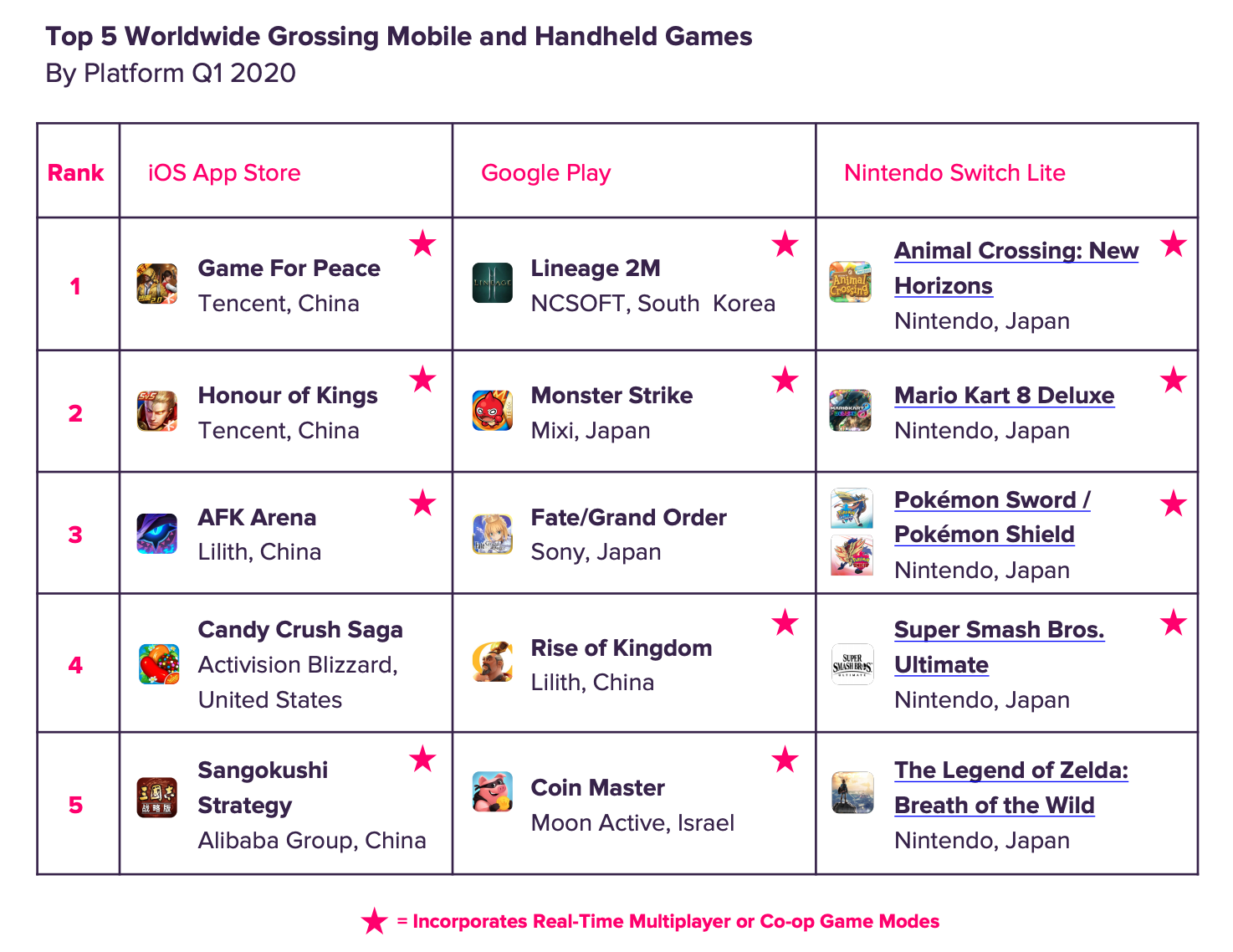
Source: App Annie
In terms of downloads, there was a surge in the number of downloads of games in the Simulation (+0.9pts), Trivia (+0.6pts), Board (+0.5pts), Casual (+0.4pts) and Adventure (+0.4pts) game categories. These categories also saw a surge in playtime session length with Simulation games outperforming the other categories by as much as +2.0 market share points.
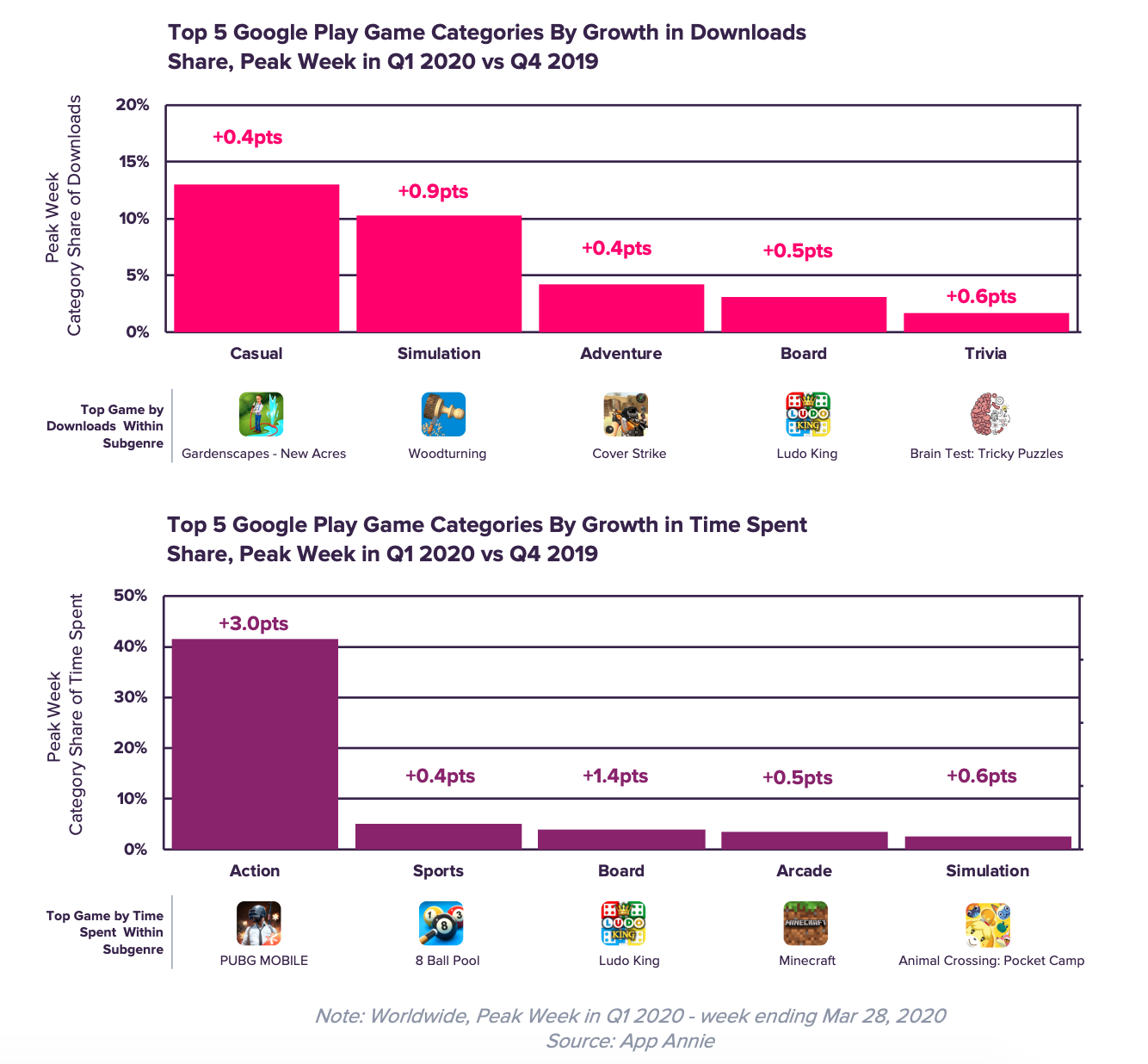
Source: App Annie
Gaming Installs & Revenue: Where They Are Now
Since early spike in game app installs (+25% in organic, +35% non-organic by early April), downloads have declined. Organic installs have decreased 16% since mid-March. Lower demand and rising media costs have also contributed to a 30% drop in marketing activity during the same time frame.
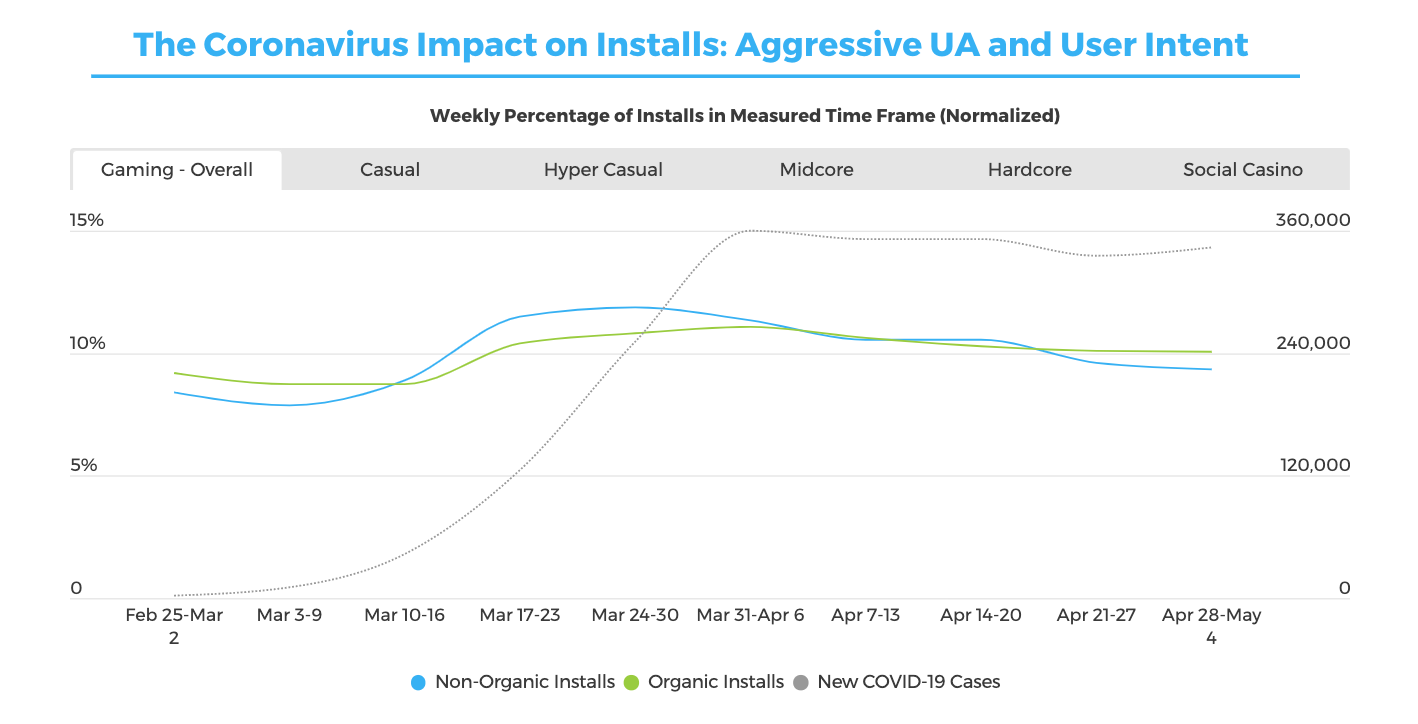
Source: AppsFlyer
Why the Gaming Gold Rush Matters for all Marketers
Despite the dip in gaming downloads and revenue since the onset of the pandemic, mobile games continue to be one of the most important mediums today. Currently, mobile ads in games drive an average 18% conversion rate. Those conversions can cost as little as 17 cents in a hyper casual game.

Source: Adjust & Unity
It should be noted that longer and more lucrative games can clock cost per acquisition rates of $3-5 or more. But this is still far below the $30-80 CPMs of TV ads. Regardless, the boom in mobile gaming indicates a massive opportunity for brands across the board to acquire new users in games.
Takeaways
Mobile is now the primary driver of growth for digital games consumption. It has also cemented its position as a major medium for advertising with an estimated 2.7 billion users to spend $77.2 billion on mobile games in 2020. In the face of an oncoming recession, mobile gaming might rightly be deemed “recession-proof”.
- In Q1 2020, games represented nearly 70% of total worldwide consumer spend for the iOS and Google Play store combined. Games also accounted for roughly 40% of overall downloads.
- Gaming saw record engagement. New players converted to paying users 24% more than a pre-COVID baseline. Mobile gamers installed 84% more apps than before.
- Mobile game revenue rose 59% but differed across stores, with the Google Play store’s revenue growth outpacing the App Store by 2x. Mobile gaming accounted for 85% of spend on Google Play and 65% on iOS.
- The boom in mobile gaming indicates a massive opportunity for brands across the board to acquire new users in games.

